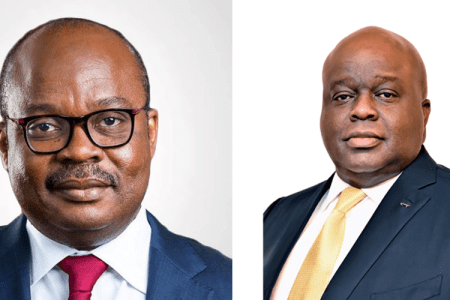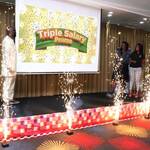In February 2024, annualized percentage rates (APRs) for bank loans remained significantly high, especially affecting the industrial sector, according to the latest report.
The report, which offers indicative rates for loans with one, three, and five-year tenors, highlighted that APRs for industries did not fall below 30%, underscoring substantial financial challenges.
For one-year tenor loans to corporates, APRs ranged from 33.68% at OmniBSIC Bank to 45.94% at the Agricultural Development Bank.
Two banks did not offer this loan during the month.
Three-year tenor loans had APRs from 33.68% at OmniBSIC Bank to 47.51% at the Agricultural Development Bank, with 10 banks abstaining from this category.
Five-year tenor loans showed rates from 30.58% at Access Bank to 47.24% at the Agricultural Development Bank, and another 10 banks did not offer this loan.
High interest rates mean that economies, businesses, and consumers will have to pay more to borrow, adjusting to new financing conditions.
27.71%-50.92% borrowing cost for households
Households faced substantial borrowing costs as well. One-year tenor loans for households had APRs starting at 27.71% from GCB Bank and reaching up to 50.92% at Stanbic Bank, with one bank not offering loans with a one-year tenor.
Three-year tenor loans saw the lowest APR at 27.21% at Bank of Africa, with the highest at 43.83%.
Two banks did not provide loans in this category. Five-year tenor loans started at 26.64% at Fidelity Bank and peaked at 44.07% at the National Investment Bank, with one bank abstaining from offering this loan.
17.03%-50.27% borrowing cost for SMEs
Small and Medium Enterprises (SMEs) also experienced a wide range of rates.
One-year tenor loans for SMEs ranged from 17.03% at Absa Bank Ghana to 50.27% at Stanbic Bank Ghana, with one bank not participating.
Three-year tenor loans had APRs from 17.02% at Absa Bank Ghana to 55.27% at Fidelity Bank, with five banks not offering this loan.
For five-year tenor loans, rates ranged from 24.44% at Fidelity Bank to 48.49% at the Agricultural Development Bank, with 13 banks not offering this loan.
The report also highlighted an alarming non-performing loans (NPL) rate of 25%, indicating that a quarter of the loans granted by banks are unlikely to be fully recovered.
The APR reflects the true cost of a loan, incorporating the Ghana Reference Rate, bank-specific risk premiums, and other charges that borrowers face when securing a loan facility.
This situation calls for strategic interventions to manage and reduce lending rates, fostering a more conducive economic environment for growth and development.
The APR provides a consistent basis for presenting annual interest rate information to protect consumers from misleading advertising.
However, an APR may not reflect the actual cost of borrowing because lenders have some leeway in its calculation, excluding certain fees.
- Tight Race For Next GIS Boss - 10 March 2025
- Church of Jesus Christ, Ga Mantse Foundation renovate Adabraka School - 27 June 2024
- Manufacturers, Trade Minister tussle over proposed cement price regulation - 26 June 2024

